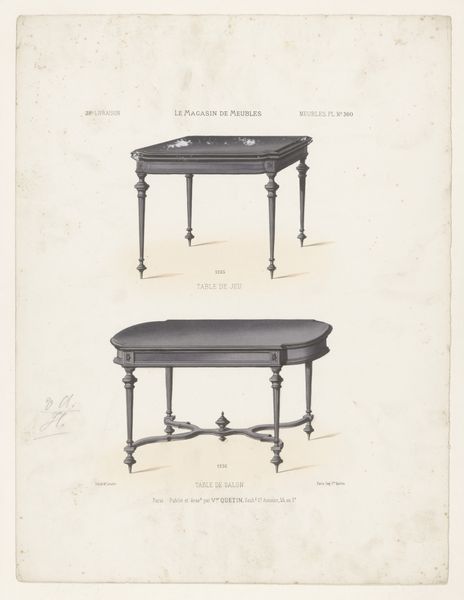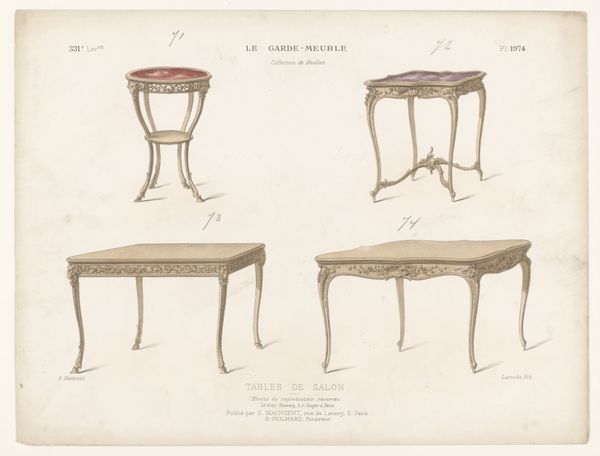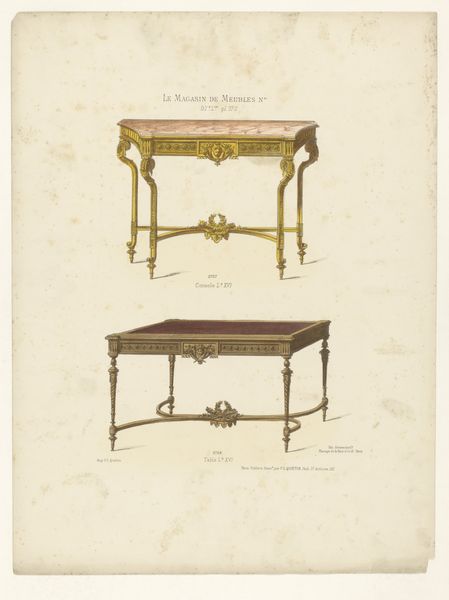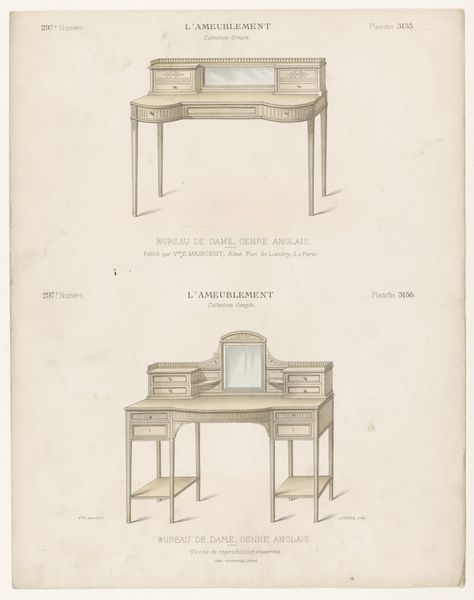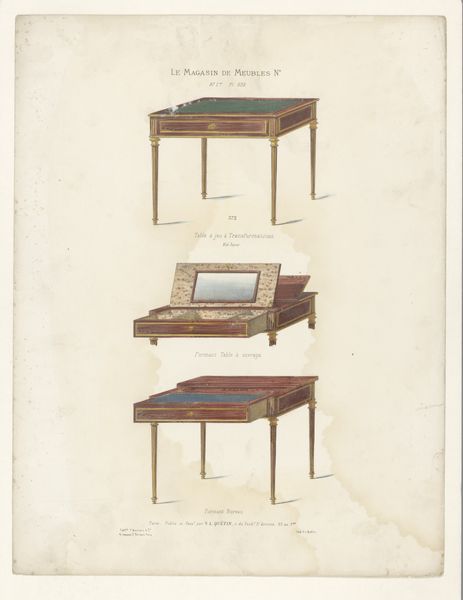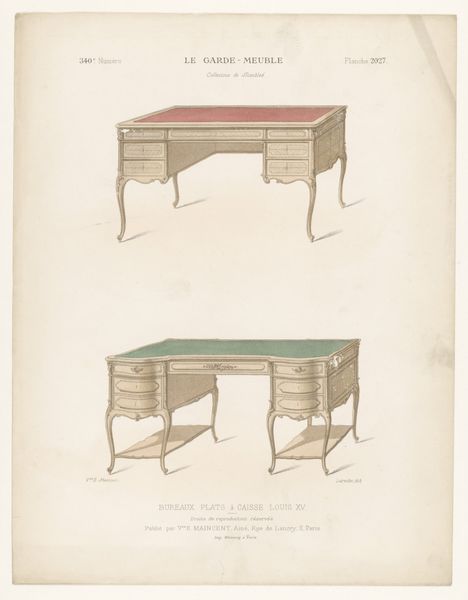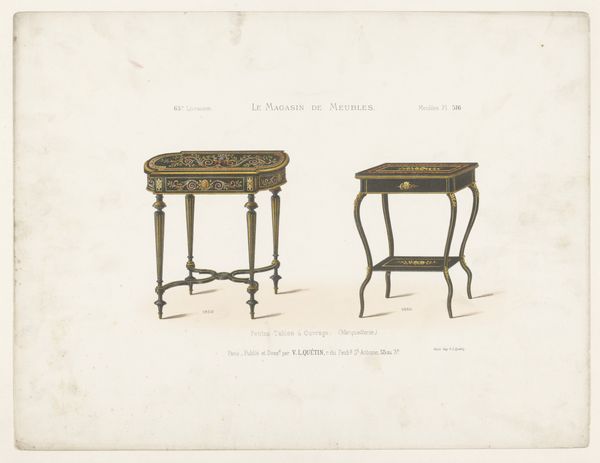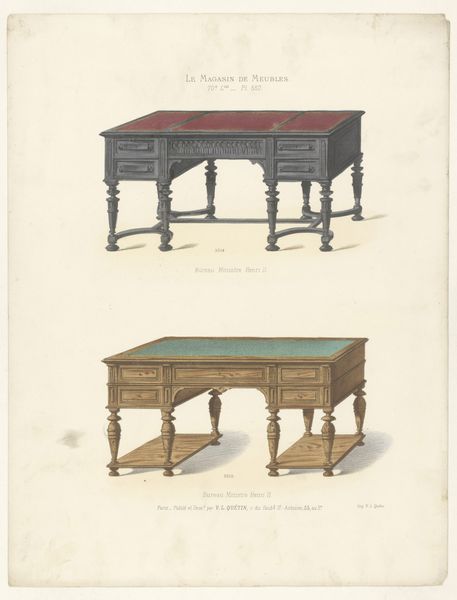
drawing, graphic-art, print, etching, paper, engraving
#
drawing
#
graphic-art
# print
#
etching
#
paper
#
engraving
Dimensions: height 358 mm, width 273 mm
Copyright: Rijks Museum: Open Domain
Editor: This is an etching titled "Speeltafel, gueridon en tafel" – roughly translated, that's "Games table, pedestal table and table"—made between 1832 and 1877. It seems to be a print meant to showcase different furniture designs. I find the rendering style so crisp and precise, it's like a blueprint for elegance. What strikes you about this work? Curator: Well, look at the title: “Le Magasin de Meubles”—The Furniture Shop. This isn't just a drawing; it’s a commercial print. Think about the social context – the burgeoning middle class in the 19th century and their aspiration for luxury. These prints democratized design, making elite aesthetics accessible to a wider market. Editor: That's fascinating. So, you're saying it’s more about mass production and consumerism than artistic expression? Curator: Exactly. The etching technique itself— the repetitive, precise lines—speaks to its function as a reproducible design. The material – inexpensive paper, likely mass-produced ink – all point to the economic engine driving its creation. It challenges our idea of ‘art’ by being fundamentally utilitarian. Notice the lacquer mentioned in the French under the tables... Consider how each table could be customised by artisans; inlays added to resonate with consumer's desire to 'own' their furniture. How does this material consideration challenge high art ideals of originality? Editor: So, it's about elevating everyday objects and understanding them as products of their time, defined by materials, production methods, and even advertising. It definitely shifts my perspective. Curator: Precisely! We're seeing art as a reflection of material culture, not just individual genius. Editor: I will be sure to explore social contexts as part of my art exploration; Thank you!
Comments
No comments
Be the first to comment and join the conversation on the ultimate creative platform.
